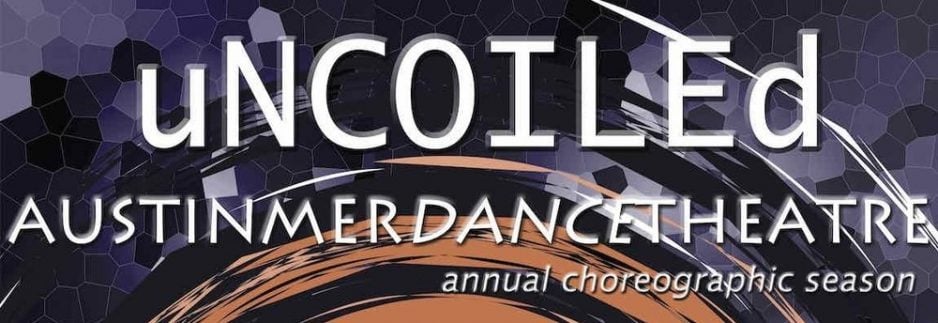Home | Blog | uNCOILEd 2016, Austinmer Dance Company
uNCOILEd 2016, Austinmer Dance Company
I bumped into the guys from Dance Makers Collective rehearsing for DADS (whose season starts this Thursday at Riverside) and was left with a pang of nostalgia. So when artistic director of Austinmer Dance Company (near my hometown on the South Coast) Michelle Forte invited me to watch their end of year season titled uNCOILEd 2016, it didn’t take much convincing to attend.
Amongst dreams of living in the house I grew up in, I have had a strong desire to work in my hometown and have put feelers out on more than one occasion for this purpose. I was and am still buoyed by famed German choreographer Pina Bausch, who based her company in Wuppertal, instead of Munich or Berlin. Perhaps very naively I thought I could achieve a similar outcome. Some would say my aspirations are merely unreasonable designs of grandeur.
Austinmer Dance Company’s latest season was what you would call a lights and tights performance where the dance is forced to speak for itself. It was comprised of four works, three of which were choreographed by the company members, and covered a diverse range of thematic ideas.
Jack Tuckerman’s Without Reason depicted a disparate existence. Four dancers appeared as isolated beings, seemingly inhabiting the same space in different time zones or parallel planes, each with their own agenda, which was curiously heightened during moments of close proximity. The conceptual intent presented an intriguing opening to the program. An unusually bold, albeit slightly unsettling, statement.
Michelle later disclosed that Jack had also designed the costumes, individually hand-painting each of the dancers’ tops with intricate patterns resembling a form of hieroglyphics. Jack’s visual aesthetic extended from the costume design to include a stylised gestural movement vocabulary which was comprised of alien-like, isolated joint hypermobility in the shoulders and hips, made all the more memorable by the dexterity of female dancer Seraphina Irvin. Jack’s synopsis was also described in poetry form, hinting at a future as an interdisciplinary contemporary performance artist.
Next on the bill was Axiom, choreographed by Rhiannon Davies, which showcased the dancers’ physical abilities. The piece opened with a dynamic solo performed by Jessica Hewett. Hewett’s dynamic energy generated a much needed momentum, which morphed into large group partnering moving as a machine of precise parts, before breaking up into smaller, singular units again. But it was Hewett’s energetic commitment which sustained the intensity of the tight composition, and the piece was aptly bookended by her unwavering pace.
The third work Precedence was choreographed by Carina Serray and featured the comedic skills of satirists John Clarke and Bryan Dawe as part of the underlying sound score, which promoted the introduction of subtle characterisation and a very applicable context. With current saturated media coverage of the farcical upcoming US presidential elections, detailing a new frontier of no holds barred personal attacks, Serray utilised the comic genius of the political comedic duo to hold a metaphoric mirror up to remind us of our own governmental idiocy. Through a juxtapositioning of her solo work with the choral group formations Serray managed to illustrate the cloak and dagger nature of politics and how we, as the public, get so caught up in the scandalous aspect we miss the real issue, which in this case, was the state of the environment.
Without being overly prescriptive, Serray was able to produce a veracity to the emotive sensibilities from her performers which was exactly what was needed at this point in the program.
The lighting design for Precedence was darker than the other pieces, lighting specific pockets of the space and alternately directing our gaze toward the intimacy of the individual amongst the anonymity of the group.
The final piece Corners was created by international guest artist, Sagi Gross. It is evident that the dancers have been influenced by their experience of working with Gross who has very extensive international choreographic experience and a company of his own based in Amsterdam. Corners served as an illustration of the program’s thematic intent in reverse. In contrast to Tuckerman’s Without Reason, Gross delves into the tension of interpersonal relationships, of the intensity involved when in the midst of a conscious uncoupling, or the same energy output from a burgeoning partnership, full of promise and carefree danger. Several clever devices were employed to lend a nuanced sophistication to Corners, including the silent rant of a dissatisfied partner, well executed from performer Madi High, to a fleeting, almost imperceptible gentle kiss, to heighten vulnerability between performers Adrian Stoll and Tuckerman. From this piece we witnessed higher stakes, through the portrayal of human foibles of imperfection, delivered with an earnest commitment from the cast.
This is Michelle Forté’s fourth end of year production, and her desire to grow a viable professional contemporary dance community in regional NSW is commendable. Why should opportunities in the arts, specifically dance in this case, be confined to hubs with the greatest population density? I’m glad I travelled down to the Gong for this gig, just a tad jealous it wasn’t mine.

